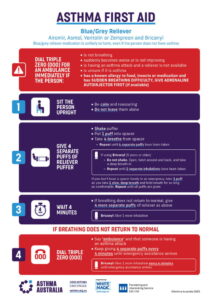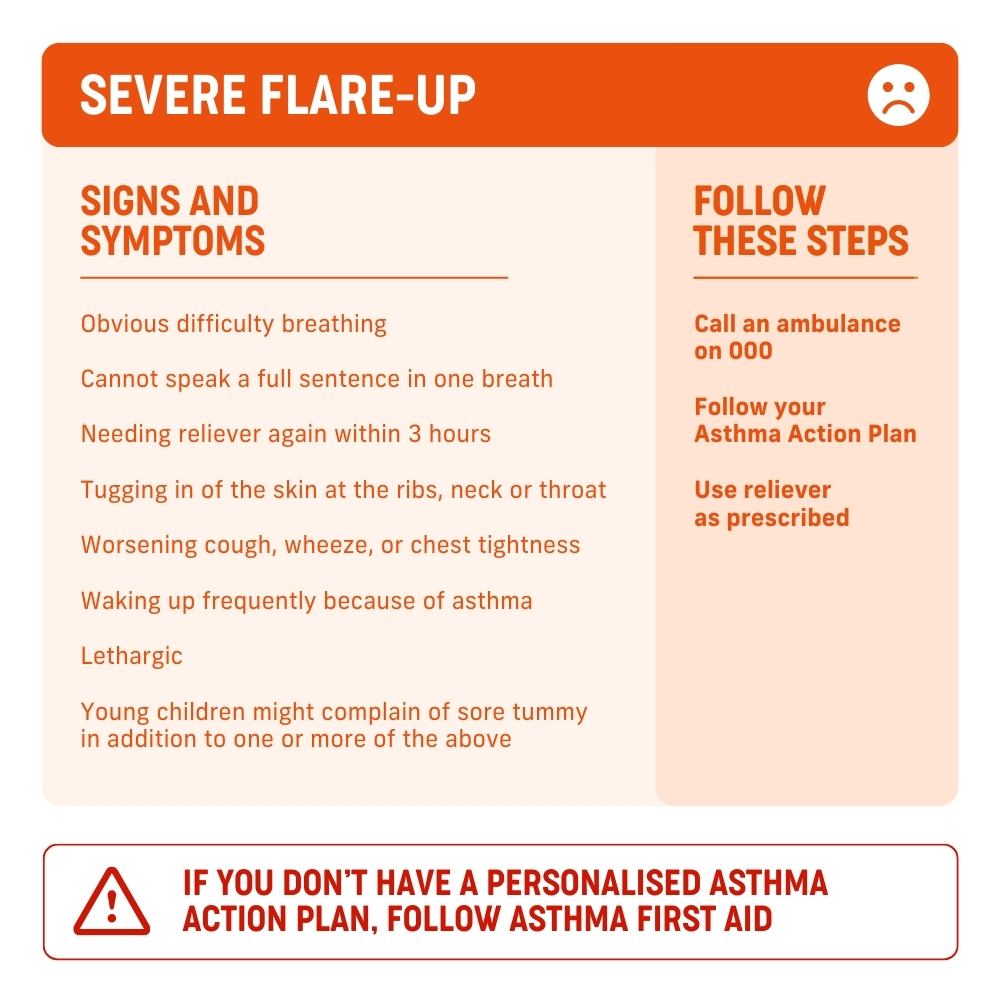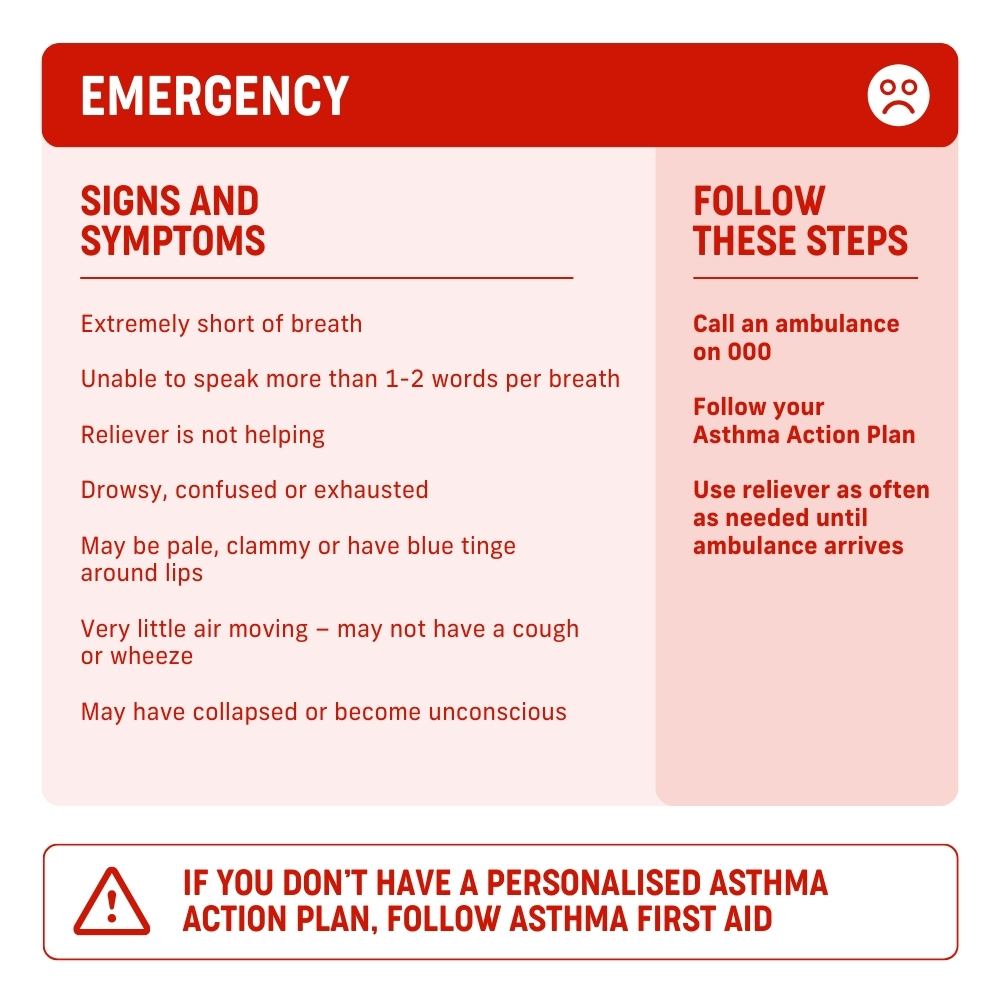Asthma attack warning signs & what to do
Asthma symptoms and flare-ups aren’t the same for everybody. Your child’s symptoms may be different to another person with asthma. If your child can’t breathe properly, you need to take it very seriously.
Your child’s asthma symptoms might begin to flare up or get worse slowly (over hours to days). This kind of flare-up may start with mild symptoms but can become very bad.
Or your child’s asthma symptoms might start very quickly (in seconds to minutes). This kind of flare-up is what most people know as an asthma attack. If it gets very bad, this is also called a ‘severe’ or even ‘life-threatening’ flare-up.
Young children can’t tell you when breathing is getting hard for them. They sometimes complain of a sore tummy or may seem very tired.
Try to look at what your child’s breathing looks like when they don’t have any asthma. This might make it easier to see these signs when they are unwell.
What does a bad asthma flare-up look like?
Signs of a bad flare-up are called a ‘tracheal tug’ or ‘work of breathing’. These signs tell you that your child’s asthma is very bad, and you should get them to a doctor straight away.
A tracheal tug is when the skin at the bottom of the neck moves in and out with each breath. You might also notice the skin sucking in between your child’s ribs.
Work of breathing is when their tummy pushes in and out with each breath. It means their little body is working very hard to get air in and out.
What is a ‘silent’ asthma attack?
Not all kids with asthma will have a wheeze or cough during an asthma flare-up. But they may still have other symptoms. For many children, when their asthma gets very bad, their cough or wheeze stops. This is because their airways have squeezed so tight they can no longer get enough air in and out. This is very dangerous.
What do I do when my child is having an asthma attack?
First of all, try to stay calm. Follow your child’s Asthma Action Plan.
If you don’t yet have an Asthma Action Plan, follow asthma first aid.

|
|
Don’t be afraid to call the ambulance or take your child to hospital! The doctors and nurses will take your concerns and your child’s breathing seriously. |
After your child comes home from hospital, book in to see their normal doctor within three days. Their doctor will make sure they are recovering well and might change their action plan to try and stop them having any more attacks. If you don’t have an action plan, you can ask for one.
The hospital may give your child a short-term Asthma Action Plan (sometimes called an Interim Action Plan). Talk about this with your doctor so you know when to go back to using your regular action plan.
Your action plan should be checked with your doctor every six months to make sure it continues to be right for your child as they grow.
The doctor might give your child liquid corticosteroids to help treat a flare-up. Your child should not need to use these very often. You can find out more about these medicines here:
How to recognise early signs of asthma









